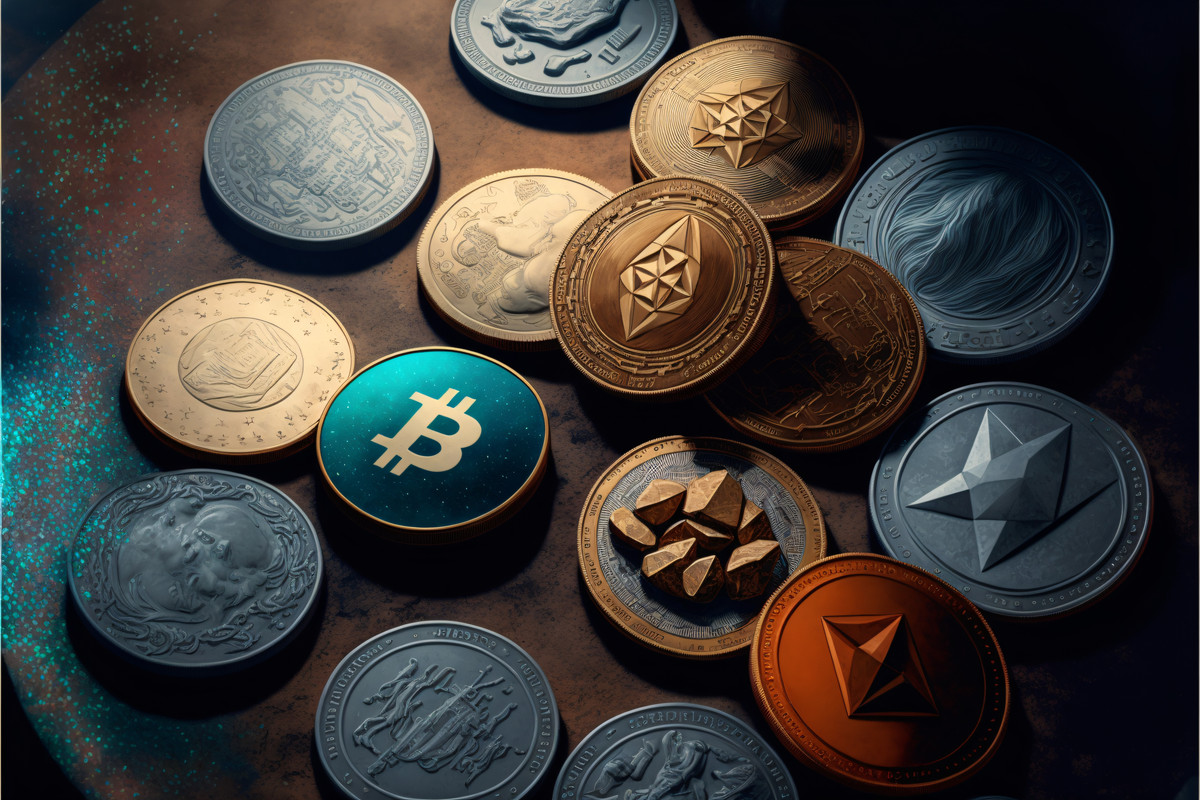What Is Digital Currency?
by siteadmin

Digital currency is money or a money-like asset that is mostly managed and stored on digital computer systems and exchanged over the internet. There are different types of digital currency, including cryptocurrencies and virtual currencies. Central banks also issue digital currency. Below, we'll discuss some of the different types. But first, let's discuss the basics. First, let's define what Digital Currency is. What is it, and how does it differ from traditional money?
Cryptocurrency
Unlike traditional currencies, cryptocurrencies have no central authority and are completely decentralized. This means that there are no centralized entities that can enforce the trust or police transactions between two parties. Moreover, they do not have a single point of failure, which is a problem that can trigger crises around the world. Whether you are looking for a simple way to send and receive money from one part of the world to another, or you're looking for an investment strategy, cryptocurrency may be the right option for you.
However, investing in cryptocurrencies carries a high risk. Just like with other investments, there are numerous unknowns. Therefore, it's important to be conservative and research well. In addition, you should consider installing a complete antivirus on your computer to keep it safe from malware and other online threats. For example, Kaspersky Internet Security can protect your computer from malware, spyware, and viruses, as well as secure online payments with bank-grade encryption.
As a result of the security concerns and risks associated with cryptocurrency, you should be cautious about using it for everyday purchases. While it is easy to use, it isn't recommended to use it for every transaction. However, you can use it to store value and make investments, like stocks, real estate, or other digital assets. You should also be aware of the possible consequences of using it without a proper investment strategy. This can lead to a loss of value and lead unwarranted speculation.
While most people still see cryptocurrency as an investment, it is increasingly becoming a viable currency. Some of the largest retailers and online services are now accepting cryptocurrency payments as a method of payment. And once you're using cryptocurrency, you can exchange your tokens for goods and services. You can even buy NFTs with cryptocurrency. In addition, you can even use cryptocurrency as a gift to family members and friends.
Stablecoins
Stablecoins are a type of digital currency that has been designed to provide the stability of a traditional asset with the flexibility of a digital one. These stablecoins are one of the most popular ways to store value in the crypto ecosystem. The USD Coin, for example, is backed by a portfolio of dollar-denominated assets in circulation and segregated accounts with regulated financial institutions. The assets are attested to by an independent accounting firm.
However, regulators are concerned that stablecoins are becoming too widely used in the decentralized finance space. In addition, some are concerned that the currency will become too dependent on decentralized crypto assets without being properly regulated. To address this concern, policymakers have proposed legislation that will require issuers of stablecoins to obtain bank charters and maintain a minimum reserve fund equal to the number of coins they issue.
The adoption of a prominent crypto asset can create a sudden demand shock for stablecoins. This is because the users of the crypto asset may need them in order to interact with it. Another example of this is the adoption of decentralized exchanges, which could also lead to increased demand for stablecoins. Furthermore, a major incident could lead to a decrease in demand for stablecoins.
Issuers of stablecoins may also charge fees for every transaction. For example, Tether charges up to 20bps of the transaction value, which translates to about $50. If Tether were to average five transactions per day, this would generate approximately $18.2 million per year in transaction fees. Despite these risks, however, the low withdrawal fees have led to an increase in the use of stablecoins as a digital currency.
Hard electronic currency
When it comes to digital currency, there are two types: soft electronic currency and hard electronic currency. Hard electronic currency cannot be disputed or reversed once used and is similar to cash. Soft electronic currency, on the other hand, can be disputed or reversed and usually has a clearing period. It is possible to soften a hard electronic currency by using a third-party service. Hard currency is the better option, however, for transactions involving large amounts.
Regulatory frameworks
Regulatory frameworks for digital currency and other financial instruments need to address the many risks involved. These risks affect consumers and investors. The risks also extend to financial stability, international law, and national security. These assets can also facilitate illegal activities and pose a threat to human rights and climate change. This is why regulatory frameworks need to evolve to address these risks. Here are some ideas for a comprehensive framework. The first step is to identify specific areas where the States need to take leadership.
The next step is to define the governing framework for digital assets. Regulatory frameworks should include requirements for crypto-asset service providers. These services must perform critical functions like storage, transfer, and settlement. They should also include requirements for licensing. The licensing criteria should be clearly defined, as should the responsible authorities. Additionally, coordination mechanisms should be well defined. Ultimately, these frameworks should make it easier for financial institutions to develop digital currency products.
Developing regulatory frameworks for digital currency and other financial products is crucial to achieving the desired outcomes. While there are many benefits that can be gained from digital assets, the regulatory frameworks must protect consumers and provide certainty for investors. This bill aims to create the first comprehensive regulatory framework for digital assets. While the bill does not specifically address crypto assets, it does define some key terms, including "virtual currency," "payment stablecoins," and "smart contracts."
Currently, European regulators are reviewing the potential introduction of a digital Euro. The European Commission is also looking at the possibility of introducing a digital currency. In an effort to protect consumers and maintain the integrity of crypto-asset exchanges, the is considering a proposal to create a pan-European regulatory sandbox. The proposed sandbox will provide a testing environment for innovative crypto-assets.
Costs
A recent study 2017 examines the costs of digital currency. By comparing digital currency to paper currency, it is able to identify both the benefits and costs of this new type of currency. It uses a model that is sensitive to interest rate and income elasticity of money demand, as well as taxes and the costs of holding cash. The study also takes into account the psychological costs associated with using this new type of currency. These costs include stress associated with unfamiliar technology, as well as an inconvenience due to the limited circulation of digital currency.
The cost of managing cash is high in some countries. Bergara and Ponce cite as an example, where it accounts for 0.58 percent of GDP. This cost is borne almost exclusively by the private sector, with banks, retailers, and households accounting for 73.3% of the total. Assenmacher and Krogstrup also note that recent experiences indicate that the lower bound for the costs associated with managing cash is well below zero. This cost is due to storage and handling fees.
The cost of using digital currency is much lower than for traditional forms of money. Most are ten times cheaper than traditional methods, and even the most expensive ones have lower transaction fees than card transactions or bank wire transactions. This means that digital currency accounts can reduce online merchant operating costs. Additionally, a digital currency system is easier to manage, with less paperwork and no commitments. Digital currency also transfers clear instantly, which saves time and money for both parties.
Categories: Cryptocurrency
Tags: blockchain, Digital Currency, Bitcoin, Crypto, Investment Strategy
Digital currency is money or a money-like asset that is mostly managed and stored on digital computer systems and exchanged over the internet. There are different types of digital currency, including cryptocurrencies and virtual currencies. Central banks also issue digital currency. Below, we'll discuss some of the different types. But first, let's discuss the basics.…
Recent Posts
- How to Become a Successful Food Blogger
- Unveiling the Healing Power of Propolis with Innovative Wellness Products
- Expert Lawn Care Lubbock Advocates for Property Care: Combatting Weed Growth and Preserving Curb Appeal
- My Insurance Agent TX Urges Drivers in Midland Odessa to Opt for Adequate Auto Liability Coverage Over State Minimums
- Lawn Care Spring Branch Advocates for Property Care: Combatting Weed Growth and Preserving Curb Appeal
